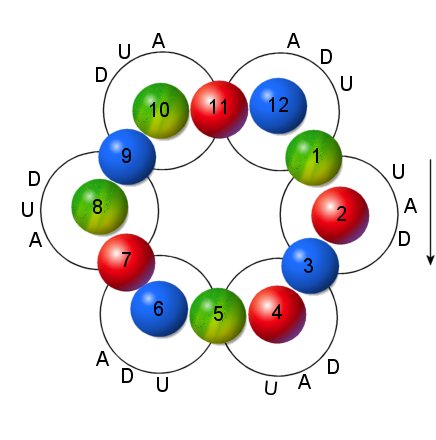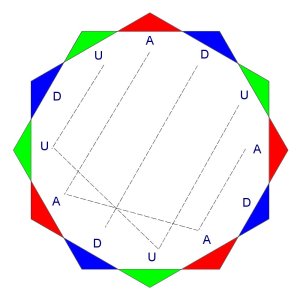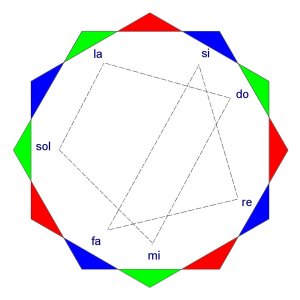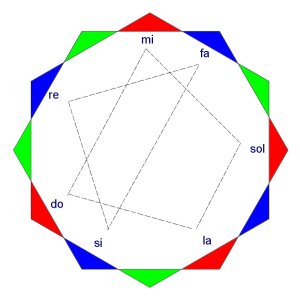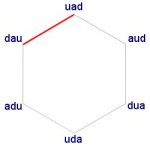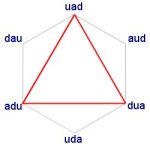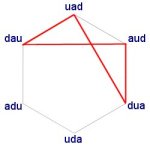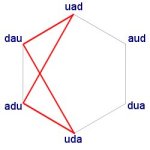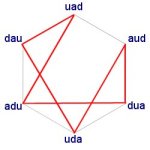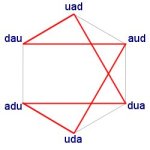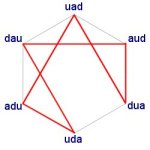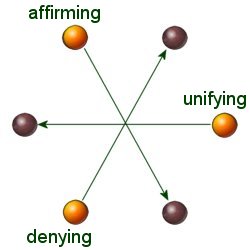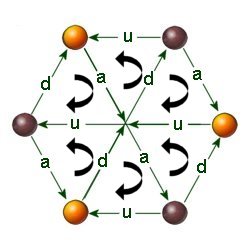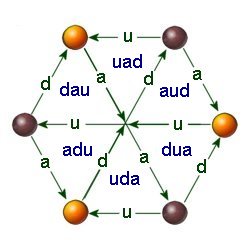Where there is growth of being, the sixty-four choices are limited, for the choices which mirror themselves return to the previous state, building the pattern of life-one, two, three, five, eight, thirteen, twenty-one—restricting the sixty-four of multiplication to the twenty-one of growth.
Book of Jubilee, Chapter 6.
When constructors are arranged so that the last force in one is the same as the first force in the next, there is always a choice of two. For example, DAU or DUA could come after UAD. If we add a third constructor, then UAD or UDA could come after DAU, and AUD or ADU could come after DUA, giving a total of four possibilities:
UAD DAU UAD or
UAD DAU UDA or
UAD DUA AUD or
UAD DUA ADU
As we add more constructors, the choices double each time: 1, 2, 4, 8, 16, 32, 64 by the time we get to seven constructors in a row. This is a rule of division or multiplication.
But consider the possibilities for three constructors we looked at above. In the first possibility listed, UAD DAU UAD, the constructor UAD is repeated. This is because UAD is mirrored to make DAU and then this is mirrored back to repeat UAD. If we prune the possibilities when this happens, we get a different set of possibilities. Instead of 1, 2, 4, 8, 16, 31, 64 we get 1, 2, 3, 5, 8, 13, 21. This is a rule of growth.
The tree diagram below shows this process. The red coloured constructors are the ones pruned from this ‘multiplication’ tree because they mirror and mirror back as described above.
There are still some repetitions of constructors in the 21 possibilities. For example, one of the possibilities is UAD DAU UDA ADU UAD DAU UDA, which has many repeats, although none that are caused by mirror-and-mirror-back. The ones that have no repetitions (except that they end where they start) are coloured green, and of course these are the three cosmoses of the fourth world (see the article on worlds and cosmoses).
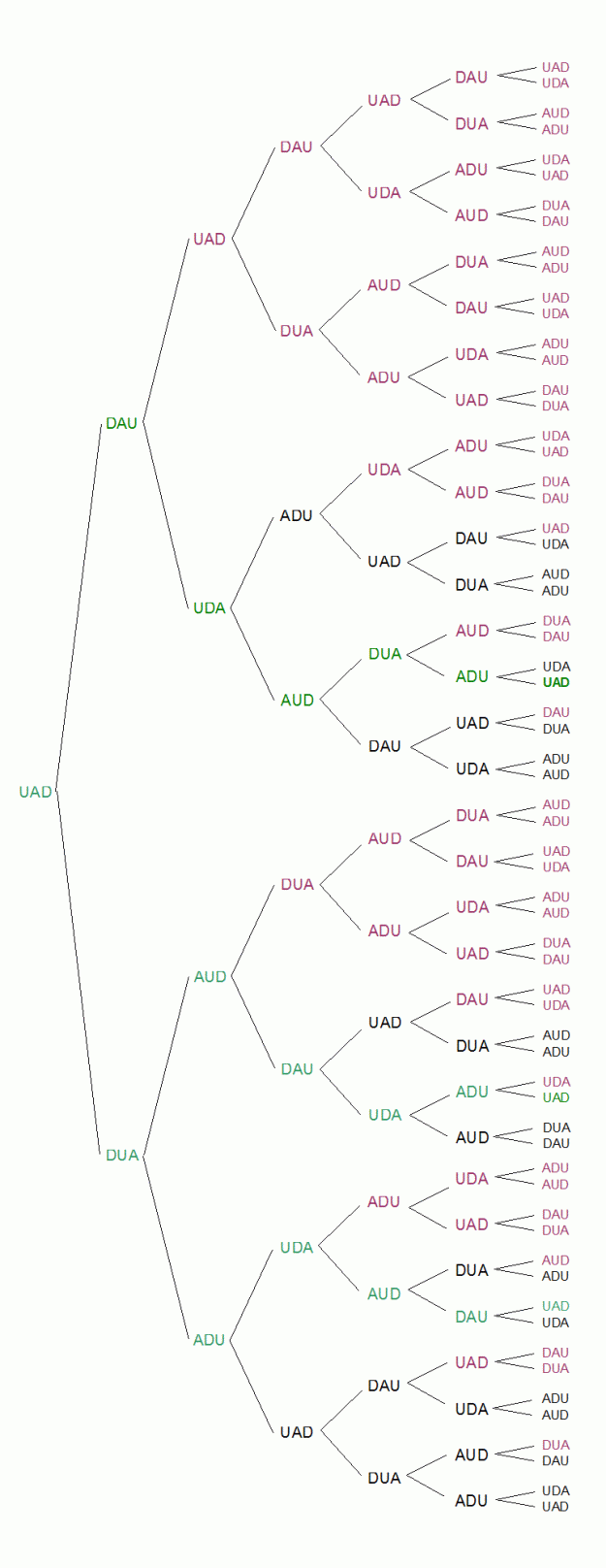
The tree of growth, 1, 2, 3, 5, 8, 13, 21, is of course the Fibonacci sequence, which is connected with organic growth.
The number 21 comes about from this tree of growth, but also appears in other ways. For example, seven times three gives 21: we line up 7 combinations of constructors made from 3 forces. How many constructors appear in the tree altogether? Leaving out the original, each appears 21 times.
Another way that 21 comes about is the law of addition: 1+2+3+4+5+6 = 21. The sequence here is 1, 3, 6, 10, 15, 21, the triangular numbers. These make the pyramids described in the book of Jubilee:
O
O O
O O O
O O O O
O O O O O
O O O O O O
The book describes a way of making a square of 64 constructors. My interpretation of this for the square beginning with UAD is shown below.
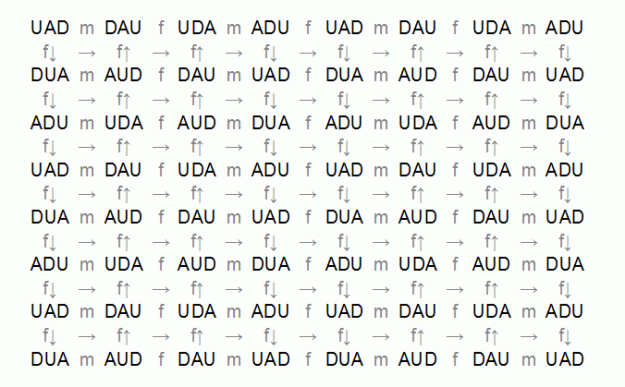
I’ve shown the relationships of mirror (m) and follower (f) that are described. Any route through the square that is consistent with the arrows shown is bound to follow a path in the tree of growth, because each arrow represents a move to a mirror or to a follower, and there are no mirror-followed-by-mirror paths. To take a random example, moving from the top left of the square: from UAD go down to DUA, go down to ADU, go right to UDA, go up to AUD, go up to DAU. This takes us along one of the green paths in the tree.
We can superimpose pyramids on this square. Here is one example, showing the pyramid starting from UAD in the top left of the square.
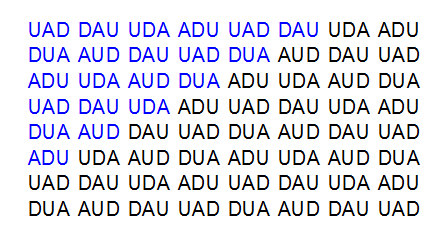
The paths from the growth tree that are in this pyramid are illustrated below. Clearly, some of the possibilities in the 1, 2, 3, 5, 8, 13 layers of the growth tree are not included in the pyramid, which only contains 1, 2, 3, 4, 5, 6.
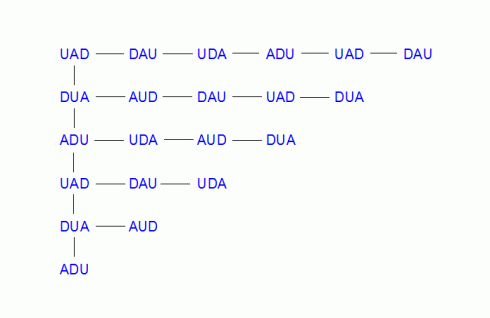
The square of 64 contains a pyramid for each constructor, “In the first column three descending; in the third column three ascending“. These are shown below:
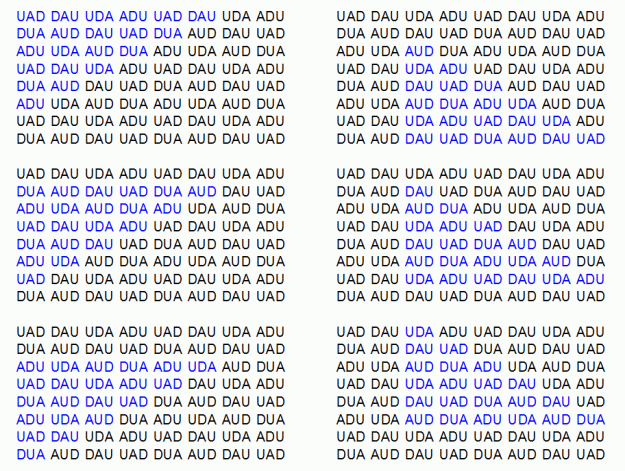
The square of 64 constructors has within it 24 self-completing sequences. Each of them is one of the 3 cosmoses in the fourth world, but starting on different constructors. As discussed before, each of these sequences can be seen as an octave. The 24 are shown in the diagram below, labelled 1-24 by the starting point. The self-completing sequence is illustrated for 1, 6, 7, 12, 12, 18, 19 and 24. The others are not drawn.
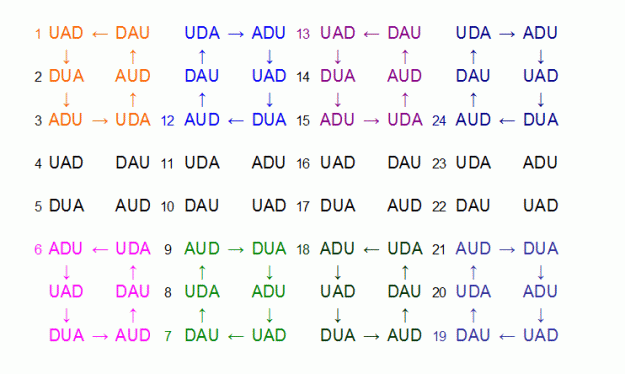
Within a single pyramid of 21, there are 4 complete octaves, but one is a duplicate of one of the others. For example, in the pyramid discussed above, depending from UAD in the top-left, the octaves labelled 1,2,3 and 12 are wholly within the pyramid. 12 is a duplicate of 3, starting in a different place. The remaining three octaves within the pyramid are the three cosmoses in the fourth world.
